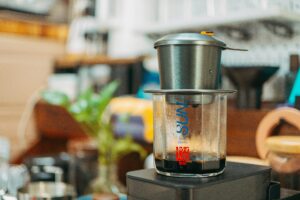Imagine biting into a rich, dark chocolate shell only to be rewarded with the crunch of a freshly roasted coffee bean. This delightful combination isn’t just a treat for your taste buds; it’s a little burst of energy wrapped in sweetness. But how much caffeine is hidden within these tiny morsels? In this blog post, we’ll explore the intriguing world of chocolate-covered coffee beans, unraveling their caffeine content and offering insights to help you enjoy them wisely.
What Are Chocolate-Covered Coffee Beans?
Chocolate-covered coffee beans are exactly what they sound like—whole coffee beans enveloped in a layer of chocolate. These delectable treats combine the intense flavors of coffee and chocolate, creating a snack that’s both indulgent and stimulating. They come in various forms, including dark chocolate, milk chocolate, and even white chocolate varieties.
The Perfect Pairing
The combination of chocolate and coffee is a match made in heaven. Coffee beans, known for their robust and bitter profile, complement the sweet and creamy nature of chocolate. This pairing not only tantalizes your taste buds but also provides a unique sensory experience that many find irresistible.
The Role of Caffeine
Caffeine is a natural stimulant found in coffee beans, tea leaves, and even cocoa beans. It’s renowned for its ability to boost alertness and reduce fatigue. When you consume chocolate-covered coffee beans, you’re getting a double dose of caffeine—from both the coffee bean and the chocolate coating.
How Much Caffeine Is in a Coffee Bean?
The caffeine content in a single coffee bean can vary depending on the type of coffee plant and the roasting process. On average, a roasted coffee bean contains about 6 milligrams of caffeine. However, this number can range from 5 to 10 milligrams based on the factors mentioned earlier.
How Much Caffeine Is in the Chocolate?
Chocolate itself contains caffeine, although in smaller amounts compared to coffee beans. Dark chocolate typically has more caffeine than milk chocolate, with an average of 12 milligrams of caffeine per ounce. Milk chocolate, on the other hand, contains about 9 milligrams per ounce. White chocolate contains negligible amounts of caffeine, as it lacks cocoa solids.
Combining the Two
When you combine a coffee bean with its chocolate coating, you’re essentially merging the caffeine content of both components. For example, a dark chocolate-covered coffee bean may contain approximately 7 milligrams of caffeine from the bean and an additional 2 milligrams from the chocolate, totaling around 9 milligrams per piece.
Variations in Caffeine Content
It’s important to note that the caffeine content can vary based on several factors. The type of coffee bean, the thickness of the chocolate coating, and the specific brand all contribute to the final caffeine count. Some gourmet brands may use higher-quality beans or thicker chocolate layers, resulting in a different caffeine profile.
How Many Beans in a Serving?
A typical serving size of chocolate-covered coffee beans is about 28 grams, which usually contains around 10-15 beans. Based on our earlier calculations, this serving could provide anywhere from 90 to 150 milligrams of caffeine. For comparison, an 8-ounce cup of brewed coffee contains about 95 milligrams of caffeine.
Health Benefits of Caffeine
In moderate amounts, caffeine can offer several health benefits. It can improve cognitive function, boost metabolism, and enhance physical performance. However, it’s crucial to consume caffeine in moderation to avoid potential side effects like jitteriness, insomnia, and increased heart rate.
Enjoying in Moderation
While chocolate-covered coffee beans are a delicious way to get a caffeine kick, it’s essential to enjoy them in moderation. Given their concentrated nature, it’s easy to consume more caffeine than intended. Be mindful of your overall caffeine intake from other sources like coffee, tea, and energy drinks.
Ideal Times to Consume
The best time to enjoy chocolate-covered coffee beans is when you need a quick energy boost. They are perfect for mid-morning or afternoon snacks, especially when you need to stay alert and focused. Avoid consuming them late in the evening to prevent disrupting your sleep patterns.
Pairing with Other Foods
Chocolate-covered coffee beans can be paired with a variety of foods to enhance your snacking experience. Try mixing them with nuts, dried fruits, or even adding them to your favorite dessert recipes. They can also be a delightful addition to a charcuterie board or used as a garnish for cocktails.
Storing Your Treats
To maintain the freshness and flavor of your chocolate-covered coffee beans, store them in a cool, dry place away from direct sunlight. An airtight container is ideal for preserving their quality. If you live in a hot climate, consider refrigerating them to prevent the chocolate from melting.
Frequently Asked Questions
How much caffeine is in a chocolate-covered coffee bean?
On average, a chocolate-covered coffee bean contains approximately 9 milligrams of caffeine, combining the caffeine from both the coffee bean and the chocolate.
Are chocolate-covered coffee beans healthy?
In moderation, they can be part of a balanced diet. They offer antioxidants from both the coffee bean and the chocolate, but it’s essential to be mindful of caffeine intake and added sugars.
Can I eat chocolate-covered coffee beans if I’m sensitive to caffeine?
If you’re sensitive to caffeine, it’s best to consume chocolate-covered coffee beans in small amounts or opt for decaffeinated varieties if available.
How many chocolate-covered coffee beans should I eat in a day?
It’s recommended to consume them in moderation, keeping in mind your overall caffeine intake from other sources. A serving size of 10-15 beans provides a significant caffeine boost.
Where can I buy high-quality chocolate-covered coffee beans?
Many gourmet stores, specialty coffee shops, and online retailers offer a variety of chocolate-covered coffee beans. Look for reputable brands that use high-quality ingredients for the best experience.
Conclusion
Chocolate-covered coffee beans offer a delightful blend of rich flavors and a satisfying caffeine kick. Whether you’re a coffee enthusiast or a chocolate lover, these treats provide the best of both worlds. However, it’s crucial to enjoy them in moderation, being mindful of their caffeine content and overall consumption.
For those looking to explore the world of chocolate-covered coffee beans further, consider trying different varieties and brands to find your perfect match. And remember, the key to fully enjoying these treats lies in savoring each bite and appreciating the intricate flavors they bring to your palate.
Ready to elevate your snacking game? Discover our curated selection of gourmet chocolate-covered coffee beans and indulge in a sensory experience like no other.






